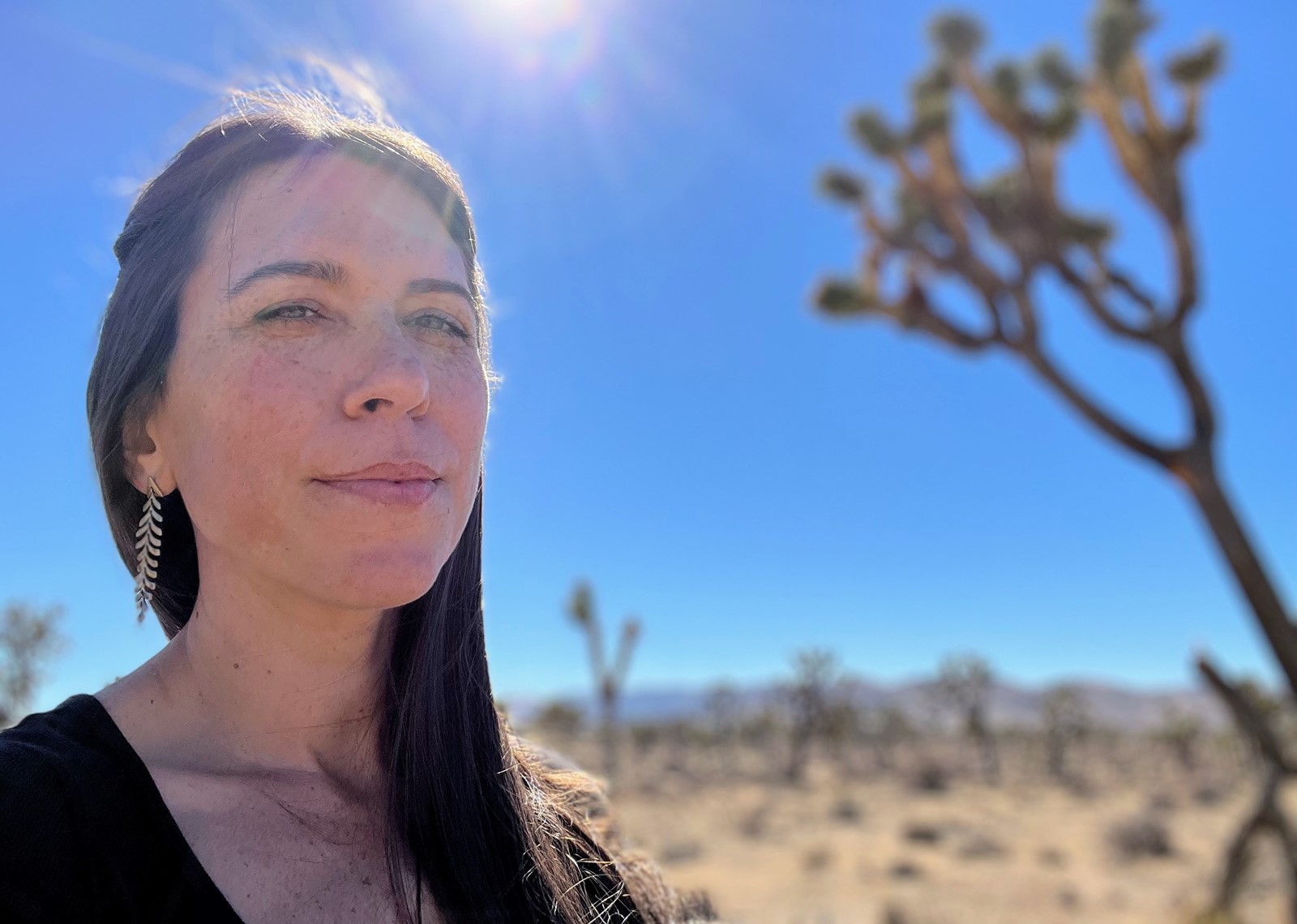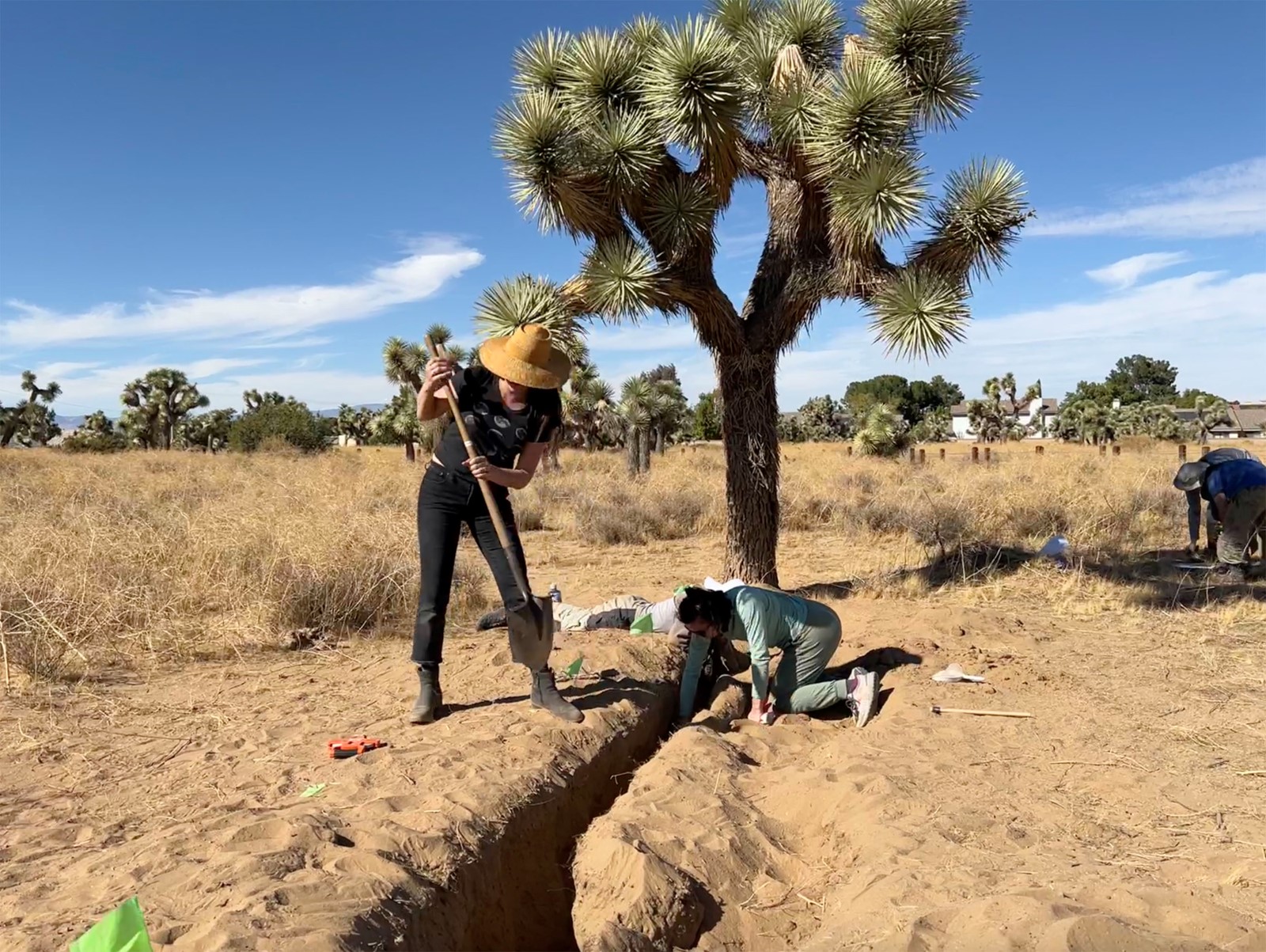

By the end of the century, several impacts are expected to decimate the iconic Joshua tree, with wildfires leading the pack, followed by climate change, drought, invasive species, pollution, nitrogen, solar energy industries and real estate development.
The gangly, spiky plants that grow in the vital and sensitive Mojave Desert can live more than 150 years. But devastating wildfires have left behind millions of charred trees — actually succulents — as piles of gray ash.
The number lost to fires will probably never be known because no surveys were taken beforehand — and it’s hard to count ash.
In earlier years, lightning would strike and destroy a single succulent’s plumes, and sometimes a few Joshua trees would burn. But those earlier blazes didn’t spread through the Joshua tree forests because the desert had far less fuel than today, the new, vast landscape of invasive plants sharing the land with the Joshuas.
Invasive species are growing on the Mojave Desert’s floor, the only place in the U.S. where Joshua trees grow. When lightning strikes, fiery plumes leap from one tree to the next — and to the next — like a cloud of hopping crickets.
“This is a plant that’s in your backyard if you live in any of the communities of the Antelope Valley,” said Jeremy Yoder, an associate professor of biology at Cal State Northridge and collaborator on the Joshua Tree Genome Project. Joshua trees are “nowhere else in the world, so that’s a thing worth celebrating right there.”
More than that, Yoder said, Joshua trees play a key role in the health of the desert environment.
“They provide food and shelter habitat … for anything else that lives in that landscape: birds, insects, lizards, desert rodents,” he said. “They are important for the whole living community of the desert, which is very special.”
Yoder also notes that the unusual Joshua tree creates a landscape like no other plant community on Earth.
“These strange growth forms — these trees that have evolved — are really sort of twisted, reaching outstretched arm(s),” he explained.
Yoder is part of a three-member Antelope Valley team attempting to bring the destruction of these slow-growing trees to the forefront of public awareness.
“Desert Forest: Life With the Joshua Tree,” an exhibit at the Lancaster Museum of Art and History in Lancaster through Dec. 29, is designed to educate the public, with Joshua tree lovers, scientists and artists spreading the word about their continued destruction.
The exhibit’s purpose is to shed light on the threatened trees, which have been around for about 2.5 million years in the fragile desert ecosystem that sustains them but is impacted by the burning of fossil fuels.
The museum project integrates natural history, indigenous knowledge, public policy, scientific research and artistic expressions to emphasize the challenges facing the Joshua tree and conservation efforts.
With a focus on destructive impacts, the exhibition explores the symbiotic relationships between the slow-growing trees, soil fungi and moth pollinators. It features the work of more than 50 historical and contemporary artists exploring a range of ideas.
The museum exhibit team asks the public’s help in saving as many of the trees as possible. But if people try to help foster growth of the burned or damaged trees, it’s a fraught process because they are impacted by climate change, which experts say makes it harder for young trees to mature.
“Joshua trees have their own Joshua Tree National Park, one of the most visited national parks in the U.S.,” said Sant Khalso, curator of the museum’s installation, an artist and an activist living in Joshua Tree. “Scientists have found, based on what’s happening with climate change, there’s a really good chance that 80 to 90% of Joshua trees will not be there in Joshua Tree National Park by the turn of the next century.”
Since the National Park Service started keeping records back in 1904, more than 3 million people have visited the plant- and rock formation-filled desert landscape of Joshua Tree National Park. And while state legislation has been enacted to help save Joshua trees, uncontrollable factors continue to plague their existence.
“Joshua trees used to be struck by lightning, and one Joshua tree would burn and it wouldn’t start this massive wildfire,” Khalso said. “But now, we have all these invasive species, and so the loss caused to fires, natural fires from lightning strikes — forget arson — have taken out over a million trees. And other fires took out another million trees.”
The 82,000-acre York fire in 2023 incinerated countless Joshua trees and forever altered the high desert landscape. And in the summer of 2020 a lightning strike ignited a fire that destroyed more than 1.3 million trees, prompting the California Fish and Game Commission to consider granting western Joshua trees protection under the California Endangered Species Act.
Joshua trees outside the national park face increasing pressure from expanding residential areas, businesses and renewable energy projects.
Along with the update of the permit system last fall that requires a fee to remove Joshua trees, state officials are working with local tribes and other stakeholders on everything from seed collection to an “adopt a Joshua tree” program in hopes of keeping the species around.
“Joshua trees (are) iconic, associated with the idea of place and home for different people,” said Juniper Harrower, an associate curator and co-editor of the Lancaster museum exhibit. “It makes us happy.”
Harrower, who has lived around the trees, said, “The Joshua trees’ only way to reproduce is with a tiny little moth who lives for five days. … Once the flowers open (it) pollinates within a few days. There’s this tight window that, if (it’s) mismatched for lining up, there’s no actual reproduction happening for this plant.”
She warned that the number of trees “can really drop. But there’s the iconic element of it, where it becomes a symbol of the change in climate. … Kind of what happened to the polar bears and monarch butterflies.”
How to help save the Joshua trees is a complicated question. Some people give money or make annual donations to support environmental legal organizations that support research into protecting the trees. Despite the state’s laws to protect the trees from development, construction in the area continues.
Harrower asks, “As a community of people, we need to start thinking about whether it is more important to have Joshua trees … or would I rather have huge Amazon … warehouses so I get my stuff a day faster?”



